Firehose CFD Simulation, Ansys Fluent Training
$80.00 $40.00 Student Discount
- The problem numerically simulates the Firehose using ANSYS Fluent software.
- We design the 2-D model by the Design Modeler software.
- We Mesh the model by ANSYS Meshing software, and the element number equals 147351.
- We perform this simulation as unsteady (Transient).
- We use the Eulerian Multi-Phases to define the two-phases flow, including water and air.
To Order Your Project or benefit from a CFD consultation, contact our experts via email (info@mr-cfd.com), online support tab, or WhatsApp at +44 7443 197273.
There are some Free Products to check our service quality.
If you want the training video in another language instead of English, ask it via info@mr-cfd.com after you buy the product.
Description
Description
The present study simulates the Firehose by ANSYS Fluent software. We perform this CFD project and investigate it by CFD analysis.
The present model is designed in two dimensions using Design Modeler software. The geometry has an imaginary building on fire, firehose as the inlet.
Also, the firehose geometry is designed based on the standard shape of real firehoses to simulate water flow directly and accurately. Grounds and objects are considered walls, and a round sphere is considered an outlet.
The meshing of the model has been done using ANSYS Meshing software. The element number is 147351.
Also, due to the nature of the present problem, the transient solver is enabled.
Firehose Methodology
The system consists of two fluids, air as the primary fluid and water as the secondary fluid. The Eulerian multiphase model has been used.
The water enters the domain with a velocity of 9 m/s with gravity considered as -9.81 m/s2 on the y-axis. Moreover, the realizable k-epsilon model is used to solve turbulent fluid equations.
Firehose Conclusion
At the end of the solution process, two and three-dimensional contours related to the velocity, water volume fraction, and eddy viscosity are obtained.
As seen in the water volume fraction contour, water starts to flow from the firehose nozzle toward a cylinder-shaped object. It finally hits and covers it with water to burn the imaginary fire. The whole simulation takes action about 1.2 seconds long.
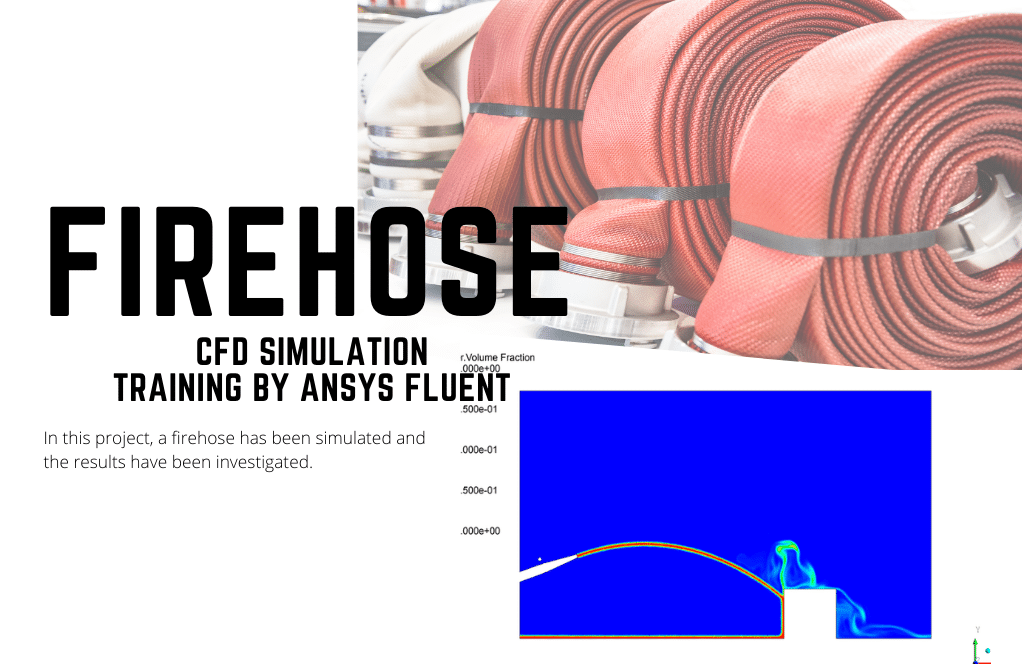
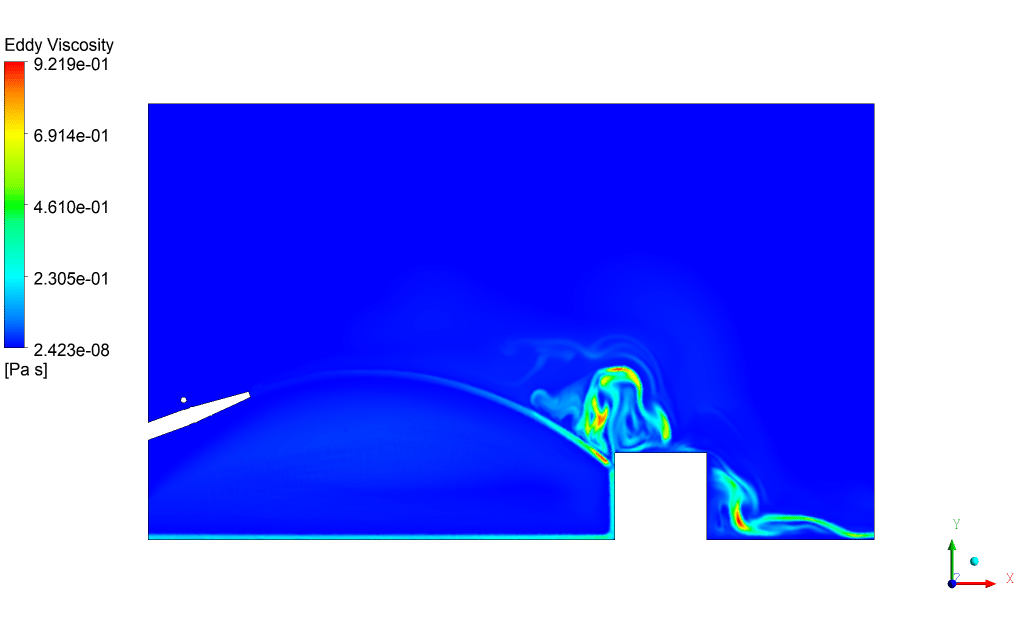
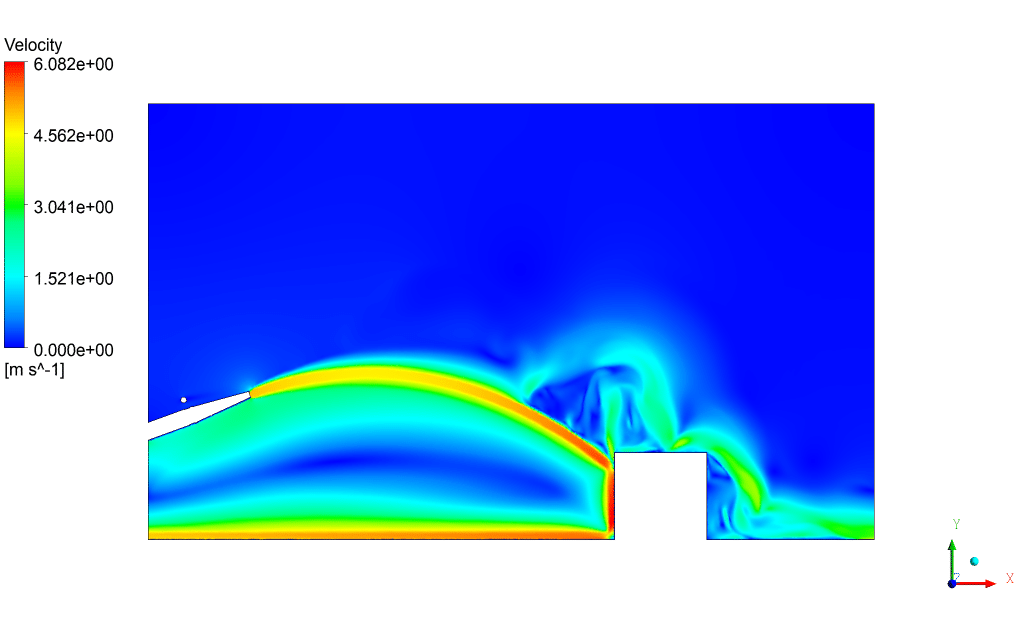
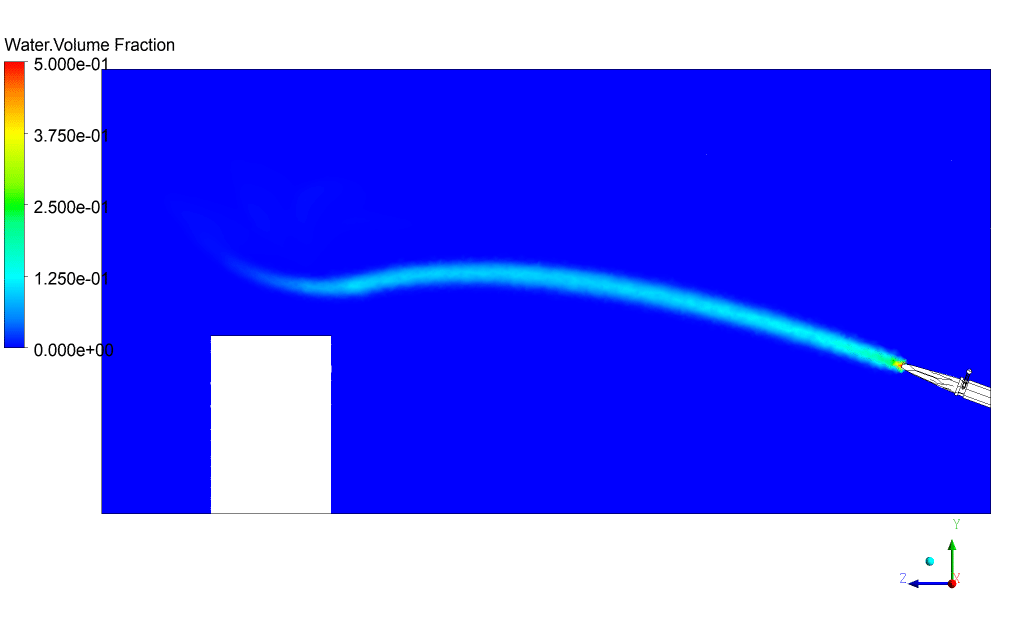
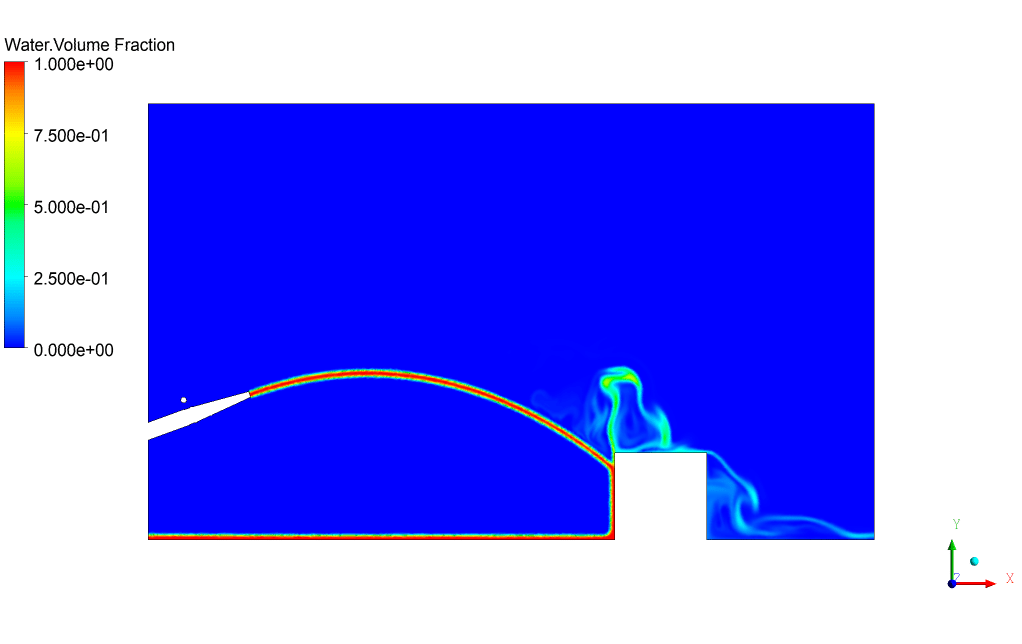

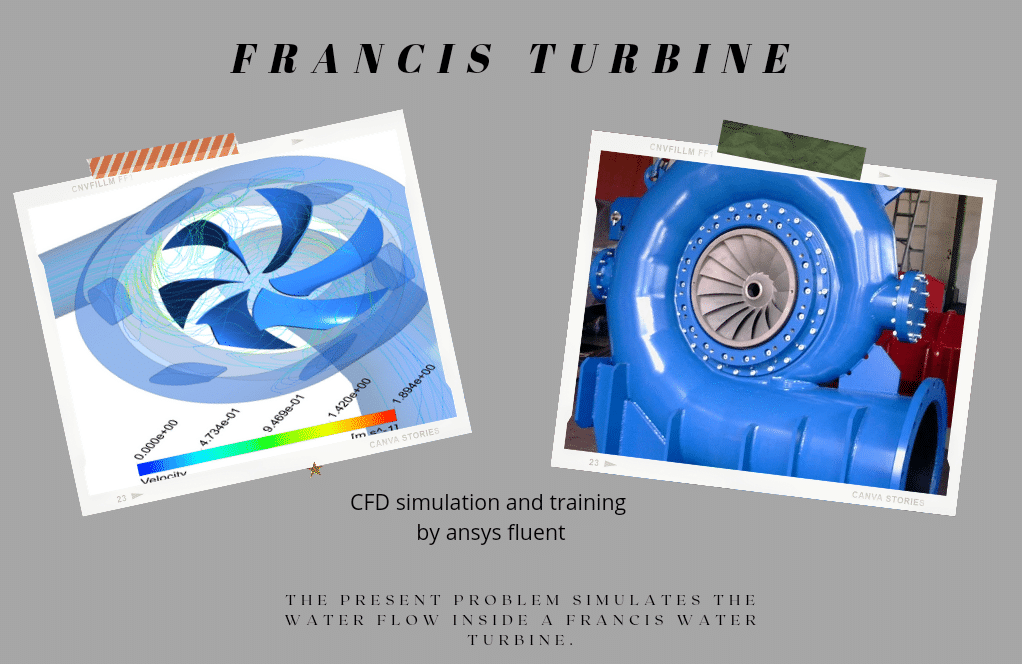
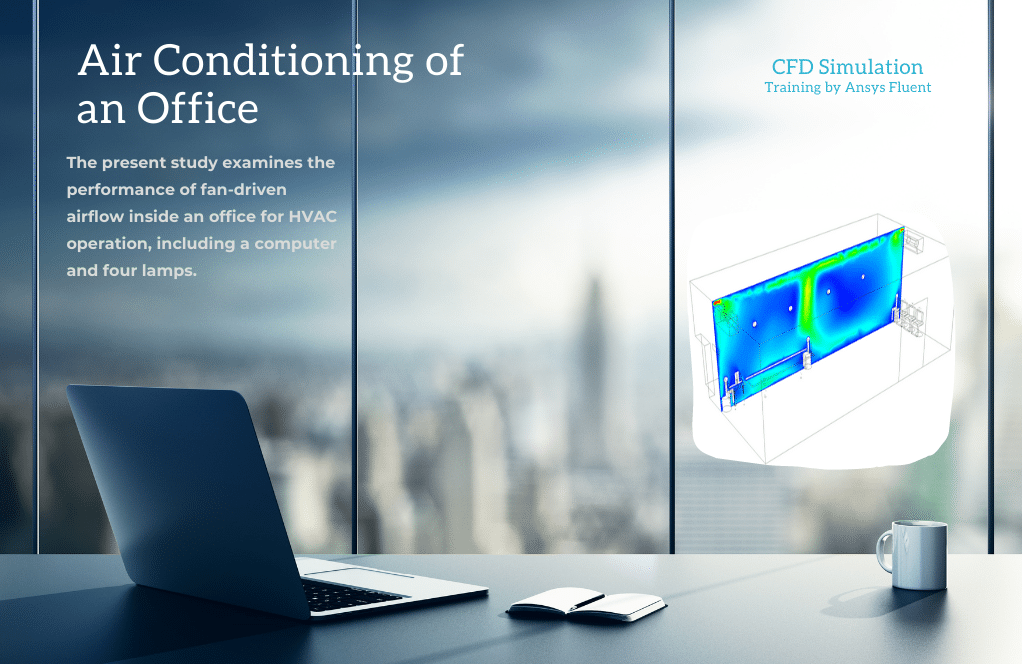
Prof. Virgil Hilpert –
I just completed the Firehose CFD Simulation training with ANSYS Fluent, and I’m blown away by the results we achieved! It was fascinating to see the two and three-dimensional contours of the water volume fraction and the mirroring of a real firefighting scenario. The detail in the water’s interaction with different surfaces and objects in the simulation was remarkable.
MR CFD Support –
We are thrilled to hear that you had such a positive experience with our Firehose CFD Simulation training! It’s great to know that the contours and the firefighting scenario were rendered to your satisfaction, and that you found value in the detailed insights provided. Thank you for taking the time to leave a review – we look forward to supporting you in your further learning endeavors!
Molly Willms –
That’s amazing how the simulation captures the fire extinguishing process. The detail and accuracy must be impressive when visualizing the flow of water and its impact on the fire zone. Do you also provide the actual temporal visualization of water extinguishing the fire?
MR CFD Support –
We’re glad you appreciated the detail in our simulation. Yes, we provide animations showcasing the temporal development of the water flow and its interaction with the fire environment. This visualization is crucial for understanding the effectiveness of the firehose in extinguishing the simulated fire.
Derek –
Is creating and extracting animation explained in this tutorial?
Maudie L. –
Is it possible to simulate this project with an intel core i3 and 8 GB of RAM?
Langley –
Hi. I am new to Ansys fluent. I want to learn and simulate two-phase flows. Could you please help me where do I start?
Torsten –
The video is amazing !
Vanessa C. –
I wish it were 3D
Jenifer Tremblay PhD –
Thanks to the course on Firehose CFD Simulation, I really appreciate the hands-on approach to learning with ANSYS Fluent. The detail on setting up multiphase flows and working with transient solvers has significantly improved my understanding of fluid dynamics in emergency response scenarios.
MR CFD Support –
Thank you for your positive feedback! We’re glad to hear that our Firehose CFD Simulation course helped deepen your understanding of fluid dynamics with a practical application. Your appreciation motivates us to continue providing high-quality learning experiences.
Olin Gleason I –
I’m thoroughly impressed with the attention to detail in the Firehose CFD Simulation. The realistic configuration and use of the Eulerian multiphase model show an advanced understanding of fluid dynamics. The clear definition of boundary conditions and clever representation of a fire scenario adds to the practical application of the training. Well done on a solid and informative CFD project.
MR CFD Support –
Thank you so much for your positive feedback! We’re thrilled to hear that you found the simulation to be detailed and practically valuable. At MR CFD Company, we strive to create simulations that are not only accurate but also serve as effective teaching tools. It’s satisfying to know we’ve met your expectations. Do not hesitate to reach out if you have any further insights or need assistance with future CFD projects!
Miss Kenyatta Renner –
I was impressed by how the water covers the cylinder-shaped object in the simulation, effectively showing how a firehose would work in extinguishing a fire. The details in the contours were remarkable.
MR CFD Support –
Thank you for your kind words! We’re delighted to hear that the simulation met your expectations and provided detailed insights into how a firehose operates in a fire scenario. Your feedback is greatly appreciated, and we’re pleased that our product was able to convey the effectiveness of a firehose in such a dynamic situation.
Miss Leola Hettinger II –
The training was incredibly well-structured, with clear steps on setting up and running the simulation. The use of 2D design really helped grasp the basics without overwhelming details.
MR CFD Support –
Thank you for your positive feedback! We’re delighted to hear that our training module on Firehose CFD simulation was helpful to you. Understanding the basics clearly is a crucial first step in mastering CFD analysis, and we’re glad our 2D approach worked well for you.